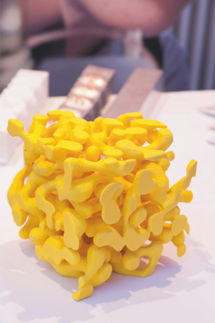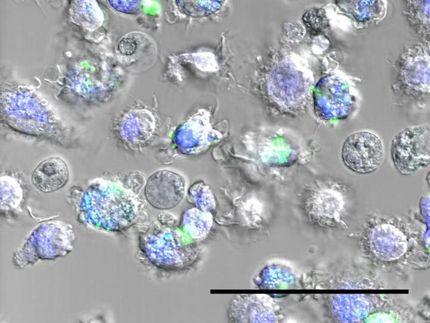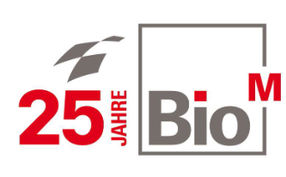Are nanoscale materials new or existing chemical substances
EPA Foregoes Opportunity to Improve Nanotechnology Oversight
The U.S. Environmental Protection Agency released its current thinking on whether a nanoscale material is a new or existing chemical substance under the Toxic Substances Control Act (TSCA). In the document, TSCA Inventory Status of Nanoscale Substances-General Approach, EPA states that it will maintain its practice of determining whether nanoscale substances qualify as new chemicals under TSCA on a case-by-case basis.
According to former EPA official and Project on Emerging Nanotechnologies (PEN) senior advisor J. Clarence Davies, The agencys current practice is inadequate to deal with nanotechnology. It is essential that EPA move quickly to recognize the novel biological and ecological characteristics of nanoscale materials. It can do this only by using the new uses provisions of TSCA, a subject not mentioned in the EPAs inventory document. With the approach outlined by EPA and because of the weaknesses in the law, the agency is not even able to identify which substances are nanomaterials, much less determine whether they pose a hazard.
Project on Emerging Nanotechnologies science advisor Andrew Maynard underlined that EPAs approach ignores the scientific research evidence to date that different nanostructures with the same molecular identity present different hazards. Nanotechnology is a rapidly growing sector of the economy that will represent an estimated $2.6 trillion in manufactured goods by 2014, or about 15 percent of global manufactured goods output.
In addition to the TSCA document, the agency issued papers for public comment pertaining to a proposed voluntary industry Nanoscale Materials Stewardship Program (NMSP)-an effort to encourage industry to provide the agency on a voluntary basis with scientific information about the risk management practices now used by manufacturers of existing nanomaterials.
Starting the Stewardship program will be a positive step toward filling in some of the information gaps facing the agency. But there should be an interplay between modifying TSCA, such as promulgating a significant new use rule for nanomaterials, and the voluntary program. A sequential approach will leave nanomaterials unregulated for far too long, and will also be less productive than if the two efforts proceed in tandem, said Davies.
This voluntary program for nanomaterials is already behind schedule. The British government put in place a Voluntary Reporting Scheme in September 2006, and appears to be on a faster track to develop appropriate controls and to give a predictable nanotechnology regulatory environment for industry and consumers, he continued.
The first generation of nanotechnology applications and products is here. In an inventory maintained by the Project on Emerging Nanotechnologies, there are now over 500 manufacturer-identified nanotechnology consumer products being sold, said Dr. Maynard.
This figure does not include nanotechnology products on the market but not identified as such, or the hundreds of nano raw materials, intermediate components, and industrial equipment items used by manufacturers today. In addition, second generation uses-in electronics, sensors, targeted drugs and active nanostructures-have already begun.
In May 2007, Davies authored the first in-depth analysis of EPAs nano-tech readiness, EPA and Nanotechnology: Oversight for the 21st Century.
The report recommends more than 25 actions that need to be taken-by EPA, Congress, the President, the National Nanotechnology Initiative, and the nanotech industry-to improve the oversight of nanotechnologies.
Topics
Organizations
Related link
Other news from the department politics & laws
These products might interest you
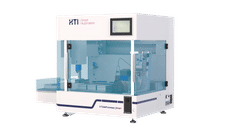
X-TubeProcessor_Smart by HTI Automation
The smart solution for filling and labeling your HPLC, cryo and micro tubes
From opening to closing. Free your laboratory from monotonous work
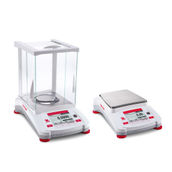
Precision balances by Ohaus
High-performance precision balances for everyday use in laboratories & industry
From milligram-accurate measurement of small samples to routine weighing in the kilogram range

Get the analytics and lab tech industry in your inbox
By submitting this form you agree that LUMITOS AG will send you the newsletter(s) selected above by email. Your data will not be passed on to third parties. Your data will be stored and processed in accordance with our data protection regulations. LUMITOS may contact you by email for the purpose of advertising or market and opinion surveys. You can revoke your consent at any time without giving reasons to LUMITOS AG, Ernst-Augustin-Str. 2, 12489 Berlin, Germany or by e-mail at revoke@lumitos.com with effect for the future. In addition, each email contains a link to unsubscribe from the corresponding newsletter.
